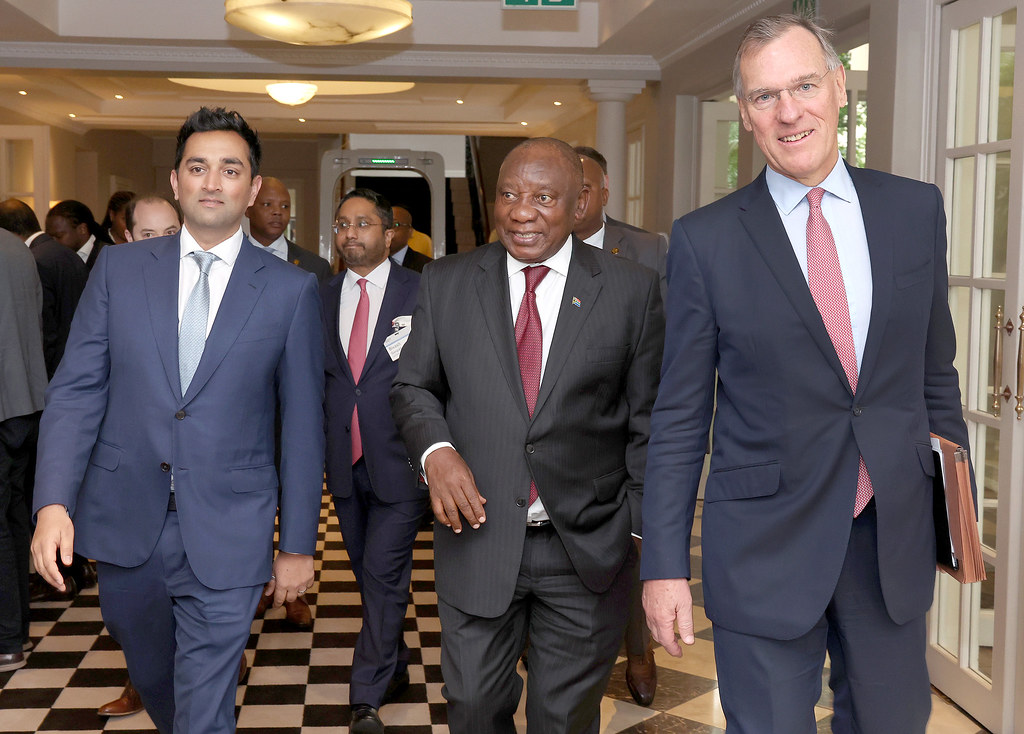South Africa Deepens Chinese Ties to Revamp Investment Flows
South Africa invites China’s outbound capital, shifting toward manufacturing-led growth ahead of G20; this impacts ZAR stability, sovereign yields (ZA:JSE), and the ZA:J203 as the economy seeks structural transformation.

As South Africa prepares to host the first-ever African continent-based G20 Johannesburg Summit in late November 2025, the recent investment forum held in Beijing on 7 November signals a pivotal strategic shift. During this forum, South African authorities actively courted Chinese firms into its manufacturing, agriculture, green-energy, and infrastructure sectors, demonstrating how Pretoria is now leveraging its role in global governance to recalibrate foreign direct investment (FDI) flows. South Africa’s GDP reached ZAR 6.6 trillion (approximately US $350 billion) in 2024, and the country consistently ranks as the most industrialized economy in sub-Saharan Africa.
Yet, its annual average growth over the past five years has hovered near a stagnant 1.5 percent, leaving unemployment above 30 percent. The aggressive Chinese investment push therefore comes at a moment where structural diversification and rapid job creation are politically and economically essential imperatives.
At the heart of the Beijing event was a clear message of strategic repositioning: South African authorities, working through the Department of Trade, Industry & Competition (dtic) and the Industrial Development Corporation (IDC), presented a curated package of 67 investment projects. These projects span crucial sectors including manufacturing, agro-processing, green metals, and logistics. Crucially, these projects are designed not merely to extract raw resources but to embed value-added production closer to the raw-material inputs. For instance, in the metal-processing chain, China’s Baiyin Nonferrous Group announced a ZAR 4 billion (approximately US $230 million) investment into gold mining in Gauteng earlier in 2025—indicative of the type of Chinese capital Pretoria is now actively targeting.
By inviting Chinese firms into manufacturing and advanced processing, South Africa aims to proactively reduce the structural trade imbalance: Chinese outbound FDI into South Africa hit US $13.2 billion in 2024, while South African investment into China stood at US $8.05 billion. The policy’s core aim is to tilt this ratio and reduce South Africa’s chronic reliance on commodity exports and unbalanced trade dependencies.
Mechanistically, this means South Africa is pivoting from being a passive recipient of capital to becoming a more proactive negotiator of partnerships that specifically target downstream processing, long-term job creation, and technology transfer. Chinese firms are being asked not just to invest capital but to localize production, develop domestic skills, and integrate their operations with regional value chains. This process is being actively facilitated by the dtic’s new “Go Global Service Centre” established in Shenzhen, which is designed to give South African investment promotion agencies a direct, focused link into China’s vast outbound investor community. For institutional investors, this repositioning signals a measurably higher bar for future investment deals: projects will now require credible localization plans, explicit alignment with South Africa’s broader industrial policy objectives, and a clear view to Africa-wide spill-overs via the African Continental Free Trade Area (AfCFTA).
On the macro and sectoral impact front, the Chinese push directly complements South Africa’s strategic imperative to raise medium-term growth toward the 3 to 4 percent range required to generate meaningful employment. If even 10 percent of the targeted 67 projects were successfully realized, and each created 1,000 direct jobs plus 3,000 indirect jobs, South Africa could add approximately 40,000 jobs, potentially shifting the unemployment rate closer to 29 to 30 percent (down from 32 percent)—a non-trivial improvement. For exchange-rate and capital-flow implications, a renewed Chinese investment envelope should help structurally reduce the persistent current account deficit (which in 2024 was approximately –2.5 percent of GDP) and support ZAR stability by rolling in longer-term FDI rather than volatile portfolio flows.
From a market perspective, the Johannesburg Stock Exchange (ZA:JSE) and related equities, particularly the JSE All Share Index (ZA:J203), stand to benefit if investors interpret the shift toward manufacturing and value-add as a structural, rather than merely cyclical, improvement. Renewed Chinese capital inflows may also help reduce sovereign financing pressures: sovereign bond yields for South Africa have been trading at approximately 8.5 percent for 10-year maturities, and a stronger FDI flow could modestly narrow the sovereign risk premium or at least halt any further de-rating by credit agencies.
Forward risks remain substantial and demand careful monitoring. First, execution is highly uncertain: Chinese commitments often face significant delays or stop-starts tied to complex local regulatory, land-tenure, or labor issues. South Africa’s complex regulatory environment and chronic energy-supply challenges (load-shedding) create major structural headwinds. Second, geopolitical risk exists: a deeper Chinese industrial presence may elicit unwelcome Western scrutiny or trade responses—particularly given South Africa’s dual, often contradictory, membership in both the G20 and BRICS groupings.
Third, the structural constraint of domestic human capital and inadequate infrastructure remains: unless project pipelines are convincingly matched by skills development and logistics upgrades, growth gains may be muted. Institutional credibility is therefore paramount: if South Africa fails to deliver on the promised structural shift, investor fatigue could quickly set in.
Looking ahead to the next 12 to 24 months, the key metric to watch is the pace of Chinese FDI commitments converting into actual disbursement, the localization percentages achieved by Chinese manufacturing firms (with a target of approximately 50 percent), and the incremental jobs created by these new investments (with a target of approximately 30,000 jobs by the end of 2026). If these indicators move decisively upward, then South Africa’s shift from commodity-dependent growth to manufacturing-led expansion will have demonstrably gained momentum, bolstering the country’s positioning ahead of the G20 Summit and offering institutional investors a viable entry into Africa’s largest industrial economy.





